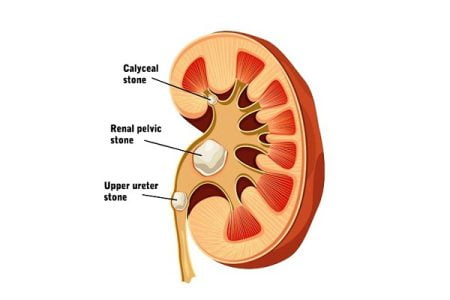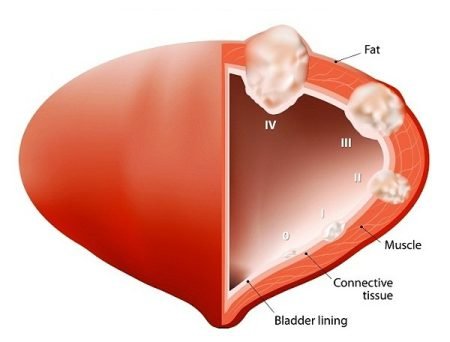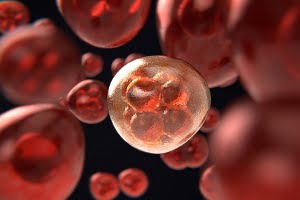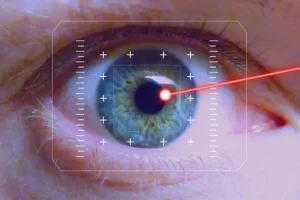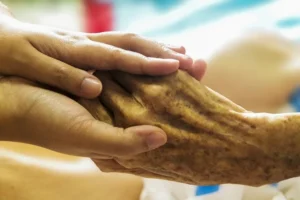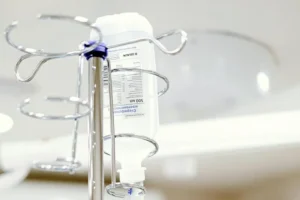What You Should Know About Amyloidosis?
- Updated on: Jul 10, 2024
- 5 min Read
- Published on Nov 19, 2019
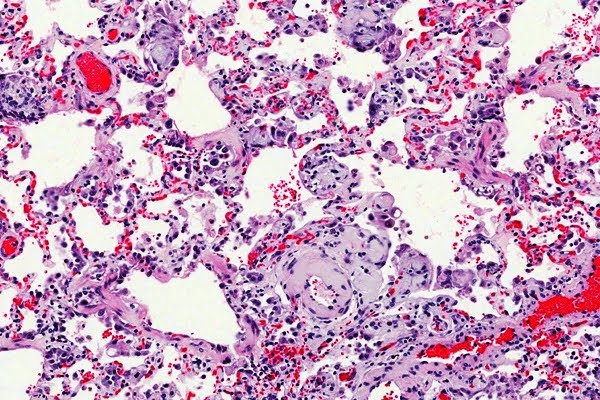
What is Amyloidosis?
Amyloidosis is a rare disease that occurs when a substance called amyloid builds up in the body. Amyloidosis can affect organs in people differently. Amyloidosis can for example affect your heart, kidneys, spleen, liver, nervous system and digestive system. Severe form of the disease can even lead to life-threatening conditions such as failure of one or more organs.
There’s no cure for amyloidosis. Treatments are however available that can help manage the symptoms and control the production of amyloid protein which is responsible for the disease.
What is an amyloid?
Amyloid is an abnormal protein that is produced in the bone marrow and can be deposited in any tissue or organ of the body. Amyloids are responsible for many diseases in humans.
There can be different types of amyloids. For example, in systemic amyloidosis, amyloids may be deposited widely in the body. The deposition of amyloid may be organ-specific such as limited to the pancreas in type 2 diabetes, or to the central nervous system in Alzheimer’s disease, Parkinson’s disease, Huntington disease, etc. The term amyloid is derived from amylo- (starch) + -oid (like) meaning like starch.
Amyloid protein can be deposited in a localized area and may not be harmful or only affect a single tissue of the body that is affecting its function. This form of amyloidosis is called localized amyloidosis. Amyloidosis that affects many tissues in the body is referred to as systemic amyloidosis. The systemic form of the disease can cause serious damages in any organ of the body, mainly the kidneys, heart (called cardiac amyloidosis), and lungs.
Facts about amyloidosis
- Amyloidosis is a rare disease that occurs due to the building up of abnormal protein (called amyloid) in your body tissues and organs.
- Amyloidosis can occur as an isolated disease (in primary amyloidosis) or as a due to some other illness (in secondary amyloidosis).
- Familial amyloidosis is a rare and inherited form of amyloidosis and can cause nerve damage referred to as transthyretin familial amyloid polyneuropathy, or TTR-FAP.
- An affected organ does not function properly leading to the appearance of certain symptoms in patients
- Diagnosis of amyloidosis is done through a biopsy of the affected tissue.
- Medical treatment options for amyloidosis depend on the type of amyloidosis and are aimed to correct organ failure and treat the underlying conditions.
- Primary amyloidosis occurs on its own. Secondary amyloidosis develops as due to another disease or illness such as chronic infections (tuberculosis or osteomyelitis), or chronic inflammatory diseases (such as rheumatoid arthritis, ankylosing spondylitis, and inflammatory bowel disease).
Prevalence of amyloidosis: How common is amyloidosis?
It is estimated that there are about 4000 new cases of AL amyloidosis annually in the United States. The actual incidence may be somewhat higher as a result of under-diagnosis. The incidence is thought to be equal in males and females. However, about 60% of patients referred to amyloid centers or hospitals or doctors are male. AL amyloidosis has been reported in individuals as young in age as 20 years but is mostly diagnosed at an age of about 50-60.
Types of amyloidosis
AL amyloidosis (immunoglobulin light chain amyloidosis) – It is the most common of all forms of amyloidosis. It can affect your heart, kidneys, skin, nerves, spleen, and liver. It was earlier termed as primary amyloidosis.
AL amyloidosis occurs when your bone marrow produces abnormal antibodies that can’t be broken down. These antibodies are then deposited in tissues as amyloids thereby affecting the normal organ function.
AA amyloidosis – AA amyloidosis generally affects the kidneys but may sometimes affect other organs such as the digestive tract, liver, heart etc. It was earlier termed as secondary amyloidosis. It occurs along with chronic infectious or inflammatory diseases.
Hereditary amyloidosis (familial amyloidosis) – It is an inherited problem that generally affects your liver, nerves, heart and kidneys. Several types of gene abnormalities at birth are linked to an increased risk of amyloid disease in children.
Dialysis-related amyloidosis – It develops when proteins in the blood are deposited in joints and tendons. Common symptoms are pain, stiffness and fluid in the joints, and carpal tunnel syndrome. It generally affects people on long-term dialysis.
Causes of amyloidosis
A discussed above, amyloidosis is caused by the buildup of amyloid, an abnormal protein. Amyloid is produced in bone marrow and can be deposited in any tissue or organ. The specific cause of amyloid deposition in your body depends on the type of amyloidosis you have.
What are the risk factors of amyloidosis?
It can affect anyone but there are some people who are at higher risk of the disease. Some of the risk factors are:
- Age: AL amyloidosis mostly affects people between ages 60 and 70
- Sex: most cases of AL amyloidosis occur in males
- Chronic infectious or inflammatory disease increases the risk of AA amyloidosis
- Family history
- Dialysis – Dialysis may not sometimes remove large proteins from the blood. Abnormal proteins can build up in blood of a patient who is on dialysis. This will eventually deposit in tissues. Modern dialysis techniques however have reduced the risk of this type of amyloidosis.
Signs and symptoms of amyloidosis
The signs and symptoms of amyloidosis are not generally visible until the condition is advanced. The signs and symptoms of amyloidosis depend on the organs affected by the disease.
Common symptoms of amyloidosis may include such as:
- Swelling mainly on your ankles and legs
- Shortness of breath
- Fatigue
- Weight loss
- Numbness or tingling pain in hands or feet
- Carpal tunnel syndrome – wrist pain
- Enlarged tongue
- Difficulty in swallowing
- Diarrhea – with blood
- Constipation
- Changes in skin such as appearance of bruises, purple patches around the eyes
- Irregular heart beat
- Excessive amounts of protein in the urine (proteinuria)
- Ventricular wall thickening and the development of heart failure
- An enlarged heart (cardiomegaly)
- Irregular heartbeat (arrhythmias)
- Abnormalities of the heart seen on electrocardiograms (for example: low voltage)
You should meet a doctor if you experience any of these signs or symptoms associated with amyloidosis regularly.
Amyloidosis is generally a multisystem disease resulting in a several clinical presentations. A patient with the disease may be referred to several sub-specialists, most commonly a nephrologist, cardiologist or a neurologist.
Diagnosing amyloidosis
Blood tests and urine tests are generally done to find abnormal proteins that could indicate amyloidosis.
The definite diagnosis of amyloidosis is made by detecting the characteristic amyloid protein in a biopsy sample of the involved tissue. A needle aspiration biopsy of fat just below the skin of the belly is done to diagnose amyloidosis. The procedure is simple and less invasive for the diagnosis of systemic amyloidosis. Pathologists can see these proteins in the biopsy specimen easily when it is coated with a special dye, called Congo red stain.
After the diagnosis is done, different tests may be conducted for the involved organs to know the extent of the disease and the organs affected by it.
Treatment of amyloidosis
There is no cure for amyloidosis. The treatment of amyloidosis depends on the type of amyloidosis and the organs involved. The initial treatment of amyloidosis is aimed to correct organ failure and treat any underlying illness. Treatment depends on the overall health of the patient.
Chemotherapy for AL amyloidosis – Chemotherapy medications that treat multiple myeloma are used in AL amyloidosis treatment to stop the growth of abnormal cells that produce amyloid.
Autologous blood stem cell transplant (ASCT) – It offers an additional treatment option for some patients. It involves collecting your own stem cells from the blood and storing them for a short time while you have high-dose chemotherapy. The stem cells are then returned to your body.
Treatment for AA amyloidosis – Treatments target the underlying condition or disease. For instance, an anti-inflammatory drug is given to treat rheumatoid arthritis.
Hereditary amyloidosis – Liver transplantation may be considered in this type of amyloidosis because the protein that causes this form of amyloidosis is produced in the liver.
Dialysis-related amyloidosis – Treatments include changing your mode of dialysis or doing a kidney transplant.






